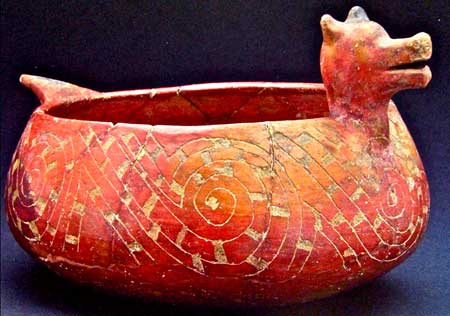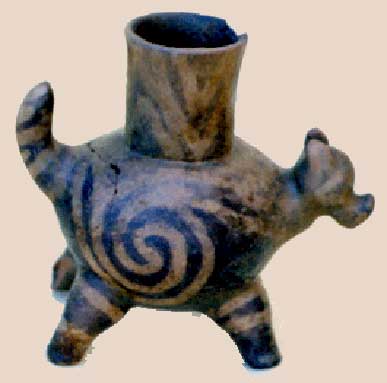The Colima types of pottery dogs were also well known in North America. Indeed, when the western Mexico culture that produced the fat little dog effigies had died out, pockets of Native peoples further north continued to produce round, fat dogs of undertain cultic meaning..
This dog effigy pot above was found in Miscogee County, Georgia, and is from the Late Mississippian era (1350-1650 CE), now in the Columbus Museum. The Colima pottery culture had vanished even before the Mississipian era began (even before the arrival of the Conquistadores, and what disrupted it is unknown). I like to think the art and myths were taken North after the cultural collapse in western Mexico, and survived some while longer in a less vigorous manner.
The swirling pattern common of such pots symbolizes water. And there are nearly identical pots that have a bizarre tail and much different head that seem to represent a mythological water-dragon. In Central America the myth of the Dog-god who turns into a monstrous axolotl or salamander may have been, for the Mound cultures, a dog that turned into an alligator, hence the association of the dog with water, and the similarity of the dragon teapot and the dog teapot.
A Mississippian Mound culture bowl is shown below which is of the type of "dragon dog" having the vortexical water symbol all over the bowl. When filled with water, it would look like a water-animal with dog's head and tail sticking above the water level.
If we dare superimpose some of the PreColumbian myths associating dogs with water and the afterlife, not only was the death-god a dog that could become an anxolotl, but a "little yellow dog" (one that had been a pet in life, or was included in the tomb as a pottery effigy) was said to lead the soul of the newly dead across a river of the land of shadows, a sort of canine Charon.



|

